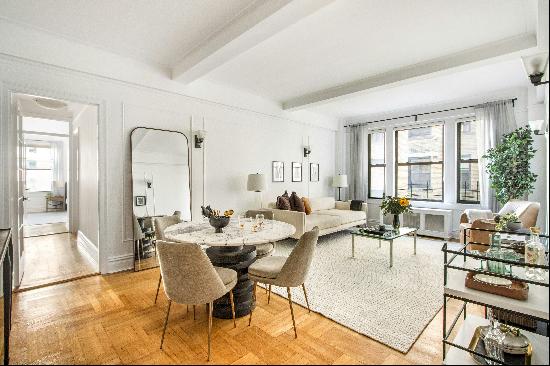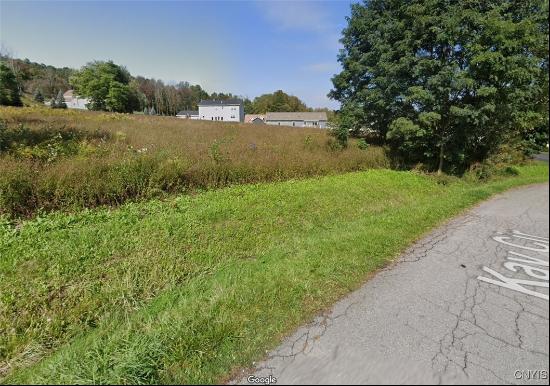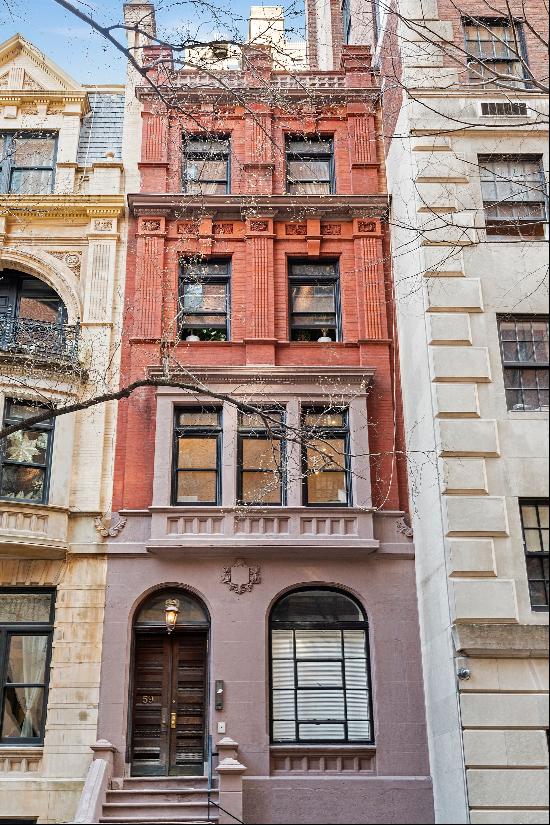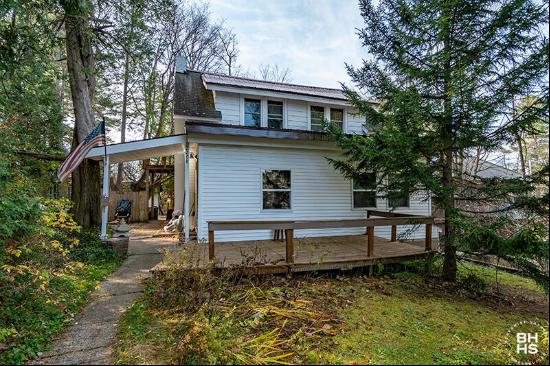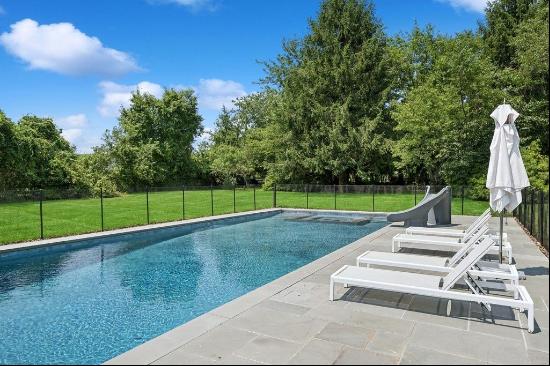
By Anthony Paletta
Over his 35-year career, architect Norman Jaffe is thought to have had a hand in designing more than 600 projects, including 50 in the Hamptons alone. Dubbed the architect of Long Island, he was as prolific as he was in demand, reportedly turning down eight out of every 10 prospective clients and only taking on projects that gave him the freedom to explore his eastern take on west coast Modernism.
One of his mid-career projects, a seven-bedroom home in Old Westbury, a village on Long Island, is now on the market for $12.5mn. Built in 1974, the house was commissioned by clients who wanted space to display their art collection, which included Renoir, Pissarro, Braque and an 8-foot tall Aristide Maillol sculpture, for which Jaffe designed a central courtyard.

Jaffe was a hands-on architect and closely involved with construction. He would often devise bespoke solutions to specific demands of a project. As well as the courtyard, he devised a novel system for lighting the artworks. “We brought light through a skylight into a painted, reflecting horizontal tray, which then reflected the light on to the paintings,” he said in an interview with Art and Architecture Quarterly, in 1983.
Jaffe's early homes were somewhat scrappy; often wooden and of eccentric sculptural geometry, with the windows small. But his style continued to evolve up until his mysterious death by drowning in 1993, when he disappeared while swimming near his Bridgehampton home. Alastair Gordon, the author of Romantic Modernist: The Life and Work of Norman Jaffe Architect, wrote that “he was open to every imaginable influence, from Piranesi and kabuki theatre to Mayan temples, potato barns, and musical theory all synthesised through his own peculiar alchemy”.

At the time, the Old Westbury house was the largest budget that he had been allocated, and it took on a rather different form from his previous rusticated Modernism. It features a solid stone base, large glass expanses and a variety of staggered volumes. As Gordon writes, “it's full of overlapping planes, pale fascia, and stone bases interspersed with clerestories, porches, and more courtyards”. You can certainly read elements of Frank Lloyd Wright in the composition and ground-floor terraces, Marcel Breuer in the materiality, and even Mies van der Rohe in the main courtyard, but it's also its own distinct place.
The current owners were immediately taken with the home, even if they weren’t able to purchase it straight away. “I was driving around the area and I saw this house. It wasn’t for sale but I said ‘Oh my God, this is the house!’,” says one of them. They did look at another Jaffe house but it wasn't quite to their taste and, eventually, after 24 years, they had the chance to buy it. “I think this one is very different from some of the other Jaffes. We did look at another house but it was very 80s and contemporary. Ours is a mid-century modern.”
Like the home's original residents, the current owners were looking for a space for their art. “We bought a large piece that stayed in storage for 10 years because we couldn't find a place for it.” The central atrium offered an ideal spot for the work, and Jaffe's surrounding rooms were well-suited for their collection. “The natural light is amazing; it's a perfect space for art.”

There were other attractions — a double-height library, now used as an office, and the home’s layout, which separates bedroom, social and guest spaces in different wings. They added an unobtrusive glass roof to the courtyard but the exterior remains entirely original, as does much of the interior, including the original end grain fir and slate flooring and the bluestone walls, which were refinished.
There were some updates to make. Interior walls were repainted, restoring them to the original white — “we brought it back to its original state”, the owner says. The dated linoleum and formica-laden kitchens were remodelled and two guest rooms were combined. They also added a frieze by the sculptor Tom Otterness to the living room, but otherwise the house preserves Jaffe’s vision.
As Gordon wrote, “For Jaffe, architecture — especially residential architecture — was never a detached, scientific process so much as a romantic journey.” It’s an attitude that is particularly clear here.
Photography: Rise Media


